SAROLANGUN, Indonesia — On a night in early July, Solikin was awake chasing elephants past sunrise. The animals had entered the community’s oil palm fields and raised hell, mashing hundreds of young palm stems to a pulp.
“What are we farmers supposed to do?” Solikin told Mongabay Indonesia a week later as he surveyed the damage in Sepintun, a village in Jambi province on the island of Sumatra. “We live off the yield of the land — but like this?”
The damage was the worst Solikin had seen in a decade, he said. The elephants left a trail of destruction that stretched for more than a mile.
The Sepintun farmers have already identified the suspects in the July rampage: two male elephants with a reputation locally for raiding crops.
“The ones who did this carnage are Haris and Lanang,” said Marhoni, an oil palm grower in Sepintun.
In 2017 the Jambi conservation department moved Haris, a male elephant, across the province from Bukit Tigapuluh National Park to Harapan Forest (“Forest of Hope”), a 98,555-hectare (243,535-acre) restoration area in the lowland near Solikin’s oil palms.
Their hope was that Haris would unite with one of the five remaining female elephants in Harapan Forest. A year later, the conservation department doubled down and sent in Lanang, a male in his 30s, to join Haris in Harapan Forest. Anecdotal testimony suggests the government’s conservation tactic has yet to win approval from all local farmers.
In the days following the incident, the Sepintun farmers appealed for help from the local conservation department, which is under Indonesia’s Ministry of Environment and Forestry. However, Solikin was told to take his case to the Sepintun village chief instead.
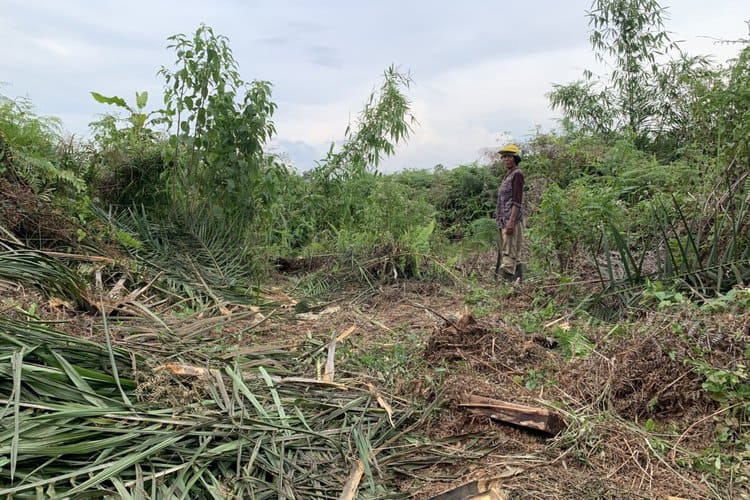
A species on the brink
The fate of the Sumatran elephant (Elephas maximus sumatrensis) remains in the balance after decades of changes to the giant’s habitat.
More than 70% of Sumatra was forested around the time Indonesia declared its independence in 1945. However, research by WWF-Indonesia indicates that Sumatran elephants have lost around 70% of their habitat in just the last 25 years, as vast tracts of the island were converted for commercially valuable oil palm, pulp and rubber concessions.
In 2007, the total remaining population of Sumatran elephants was estimated at between 2,400 and 2,800 individuals in the wild. A yet-to-be-published government conservation plan for the species, seen by Mongabay, includes an updated estimate of 924-1,359 elephants, a decline of 52-62% over the previous figure.
Sepintun farmer Marhoni said the trouble began locally when state-owned plantation company PT Alam Lestari Nusantara cleared the surrounding forest to plant rubber trees. In 2009, the company obtained a permit from Indonesian’s then-forestry minister for 10,785 hectares (26,650 acres).
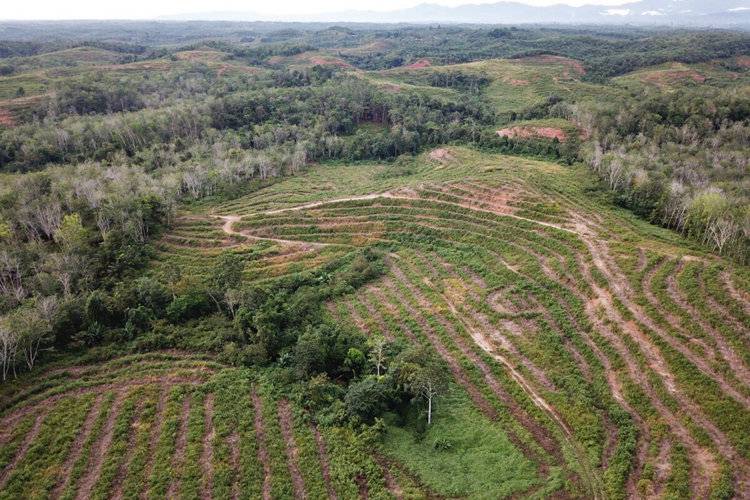
Farmers in Sepintun said human-elephant encounters began to increase markedly around 2016, after the environment changed.
“In the past there wasn’t any conflict,” said Marhoni, a member of the seminomadic Orang Rimba Indigenous community.
But the peace began to fray as forest areas surrounding four rivers were uprooted. Tracts around the Meranti, Merentang, Semambu and Telisak rivers were formerly home to elephant herds, but are now plantation concessions operated by PT Alam Lestari Nusantara (the company’s name translates into “Eternal Nature Archipelago”). Other companies operating in the area are PT Agronusa Alam Sejahtera and PT Samhutani.
Feri Irawan, director of Perkumpulan Hijau, a local NGO, who has studied elephants in Sepintun, said almost all wild elephant enclaves in Jambi province have been encroached upon by smallholder farmers or industrial plantations.
The clash between local people and elephants, he added, was an inevitable consequence of plantation industry practices, and only a comprehensive review of permits in and around animal habitats would avert crisis.
“It has to be done if the government really wants to save protected animals that are increasingly threatened now,” Feri said.
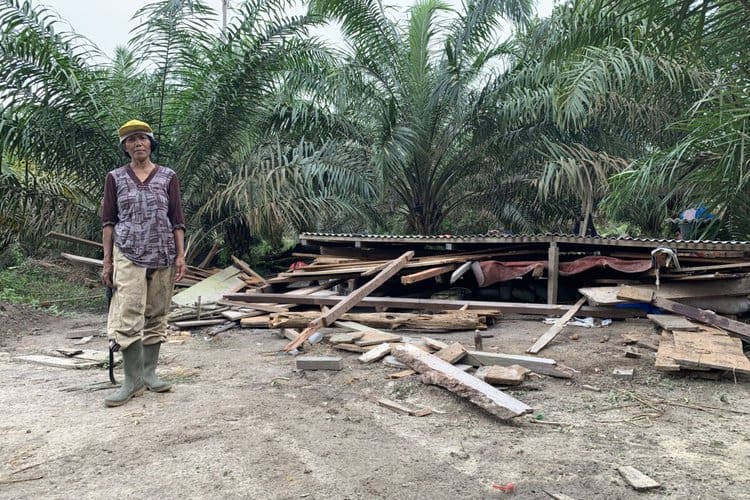
An uphill tusk
On the other side of Jambi, the situation for the Sumatran elephant is just as grave in Haris and Lanang’s home forest.
The largest remaining elephant habitat in Jambi is in Bukit Tigapuluh National Park in Tebo district, according to Sukmareni at Jambi-based nonprofit Warsi Indonesian Conservation Community.
The challenges in Bukit Tigapuluh, which is on Jambi’s northern border with Riau province, aren’t new. In a 2010 report, “Last Chance to Save Bukit Tigapuluh,” a coalition of environmental groups wrote that “the natural forest, wildlife and indigenous people of Bukit Tigapuluh continue to be threatened.”
Elephant encounters are on the rise outside of the remaining forest, including in the rubber concession of PT Lestari Asri Jaya, a subsidiary of the Michelin Group and the site of a controversial “green bonds” project.
“In the past, elephants played in the forest cleared by LAJ and [internal migrant] communities,” said Ishak, a former elected leader of nearby Pamayungan village. “Now both LAJ’s rubber and the people’s areas are being eaten by elephants.”
During 2021-2022, four elephants died in the villages of Suo-suo and Muara Kilis, allegedly due to poisoning. Data from the Indonesian Elephant Conservation Forum (FKGI) show that throughout 2019 there were 277 encounters between elephants and humans. In 2020, there were 275 cases. In 2021, the number of conflicts reached 314 cases.
Farmers in Tebo are often angered by elephants trampling through their cultivation area, which can cause millions of rupiah in damages.
“The huts were torn apart, destroyed, the salt and rice was gone, dozens of elephants entered,” said Sugiatno, a 44-year-old oil palm grower.
Farmers have sought to divert elephants away from their plots by putting up electric fences, but this worries conservationists who say itinerant elephants may just wander into other farmed areas instead. The elephants have limited room to maneuver: the hilly national park rises into higher elevations inaccessible to them.
“It is impossible for elephants to enter the national park, because of the highlands,” said Hefa Edison, head of the Elephant Conservation Information Center in Tebo. “They will keep running into the community plantations.
“In 2000, we were still able to stop the elephants from coming down to community land, but only for three years,” Hefa continued. “After that we couldn’t.”
In 2018, LAJ allocated 9,700 hectares (24,000 acres) of land as a conservation area, but encroachment continued, and at the time of writing only 2,800 hectares (6,900 acres) were still forested.
In one day, an adult elephant requires around 180 liters (45 gallons) of water and 150-250 kilograms (330-550 pounds) of feed, about 10% of its body weight. Adult female elephants can weigh up to 2.7 metric tons and males up to 3 metric tons. Elephants also need an area to roam of 2,000 hectares (4,900 acres).
Hefa said the corridor was insufficient to meet the needs of the elephants. “So like it or not, elephants will keep coming down to the community plantations.”

Karmila Parakkasi, the sustainability lead at PT Royal Lestari Utama, parent of LAJ, said the company had conducted training for 135 people since 2018 on managing encounters with wildlife. Karmila, who formerly ran WWF-Indonesia’s tiger research team, said the program was showing early signs of success.
“In 2021, the damaged plantation area will reach 29.25 hectares [72.3 acres],” Karmila said. “In 2022 it was 6.75 hectares [16.7 acres], or a reduction of 77%.”
Mongabay Indonesia requested comment from the conservation department and police in Jambi province, but received no response to calls or texts.
More than 2 million smallholder farmers are responsible for around 40% of the palm oil production in Indonesia, the world’s largest producer of a commodity found in countless consumer products worldwide. Like Solikin, most oil palm farmers are struggling to get by on fine margins, as inflationary pressures raise costs for their families.
Alber Tetanus, coordinator of FKGI Jambi, said his organization had recorded 700 elephant deaths in the past decade owing to ivory poachers or conflicts with farmers.
“They say the elephants are protected animals, and if we’re reckless we’re in the wrong,” Solikin said as he surveyed his damaged livelihood a week after the incident. “But we also want to live.”
This article by Yitno Suprapto was first published by Mongabay.com on 1 August 2023. Lead Image: A Sumatran elephant in South Sumatra. Image by Rifky/CIFOR via Flickr (CC BY-NC-ND 2.0).
What you can do
Support ‘Fighting for Wildlife’ by donating as little as $1 – It only takes a minute. Thank you.
Fighting for Wildlife supports approved wildlife conservation organizations, which spend at least 80 percent of the money they raise on actual fieldwork, rather than administration and fundraising. When making a donation you can designate for which type of initiative it should be used – wildlife, oceans, forests or climate.


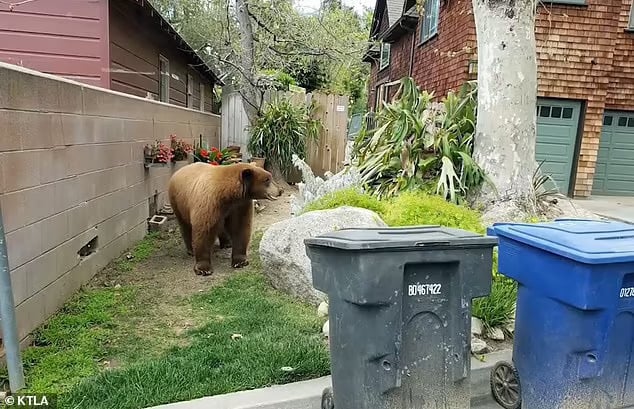


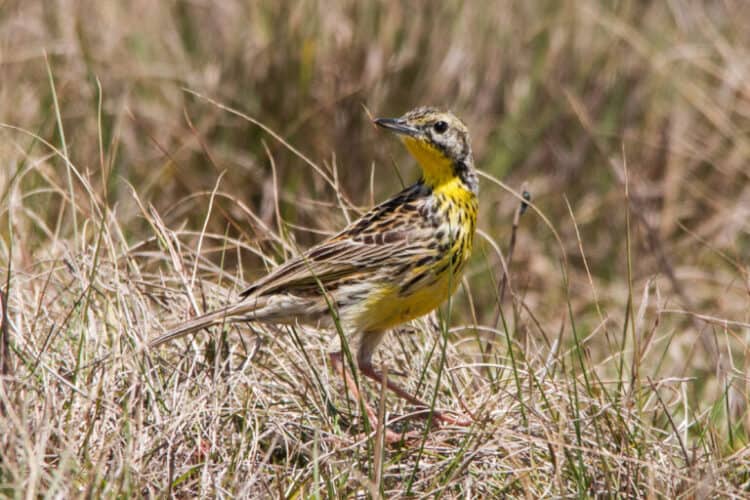
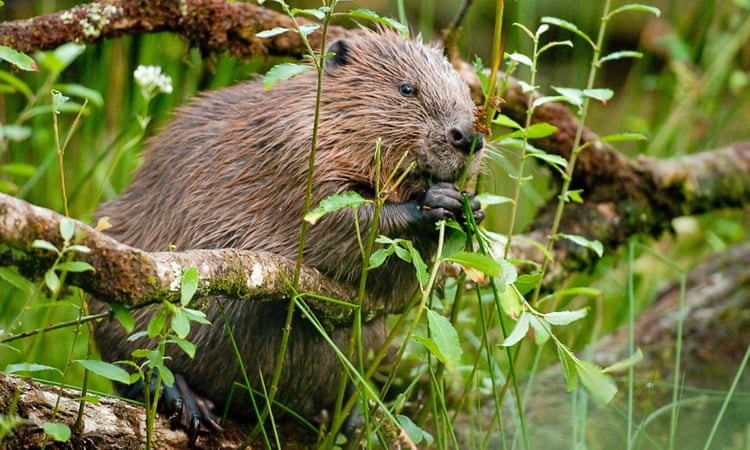
Leave a Reply